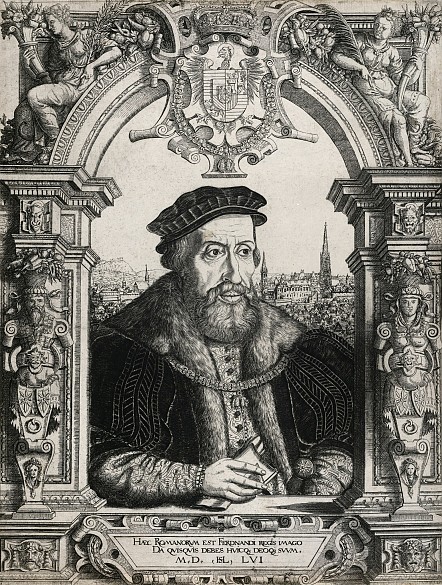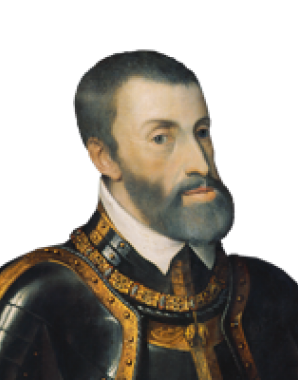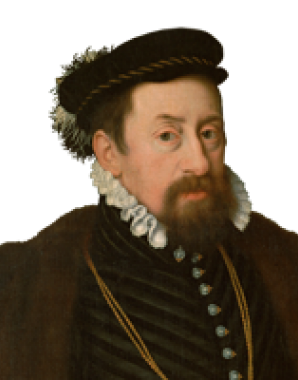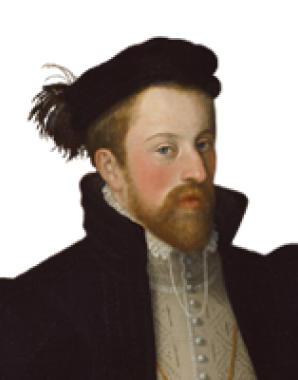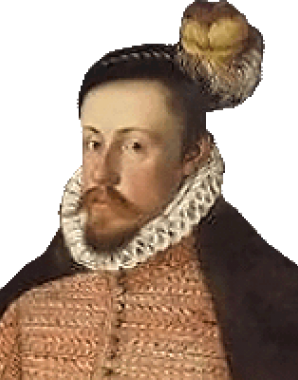Ferdinand I as the founder of the Austrian Habsburg Monarchy
The acquisition of the crowns of Bohemia and Hungary necessitated the creation of a bureaucratic apparatus to coordinate the administration of the various territories. Ferdinand laid the basis for administrative structures, the main features of which were to remain in place for centuries to come.
In 1527 Ferdinand established several new administrative authorities. The Privy Council was responsible for foreign policy and dynastic affairs. The Aulic Council oversaw the administration of justice while the Hofkammer (Court Chamber) was responsible for the financial administration. In the Court Chancellery Ferdinand had an executive organ that issued instructions to the administrations of the individual dominions. The court household was also reorganized, and it is here that the structures introduced at this time were to last longest, de facto to the end of the Monarchy in 1918. The foundation of the Court Council of War in 1556 as the highest organ of military administration completed Ferdinand’s administrative reforms.
The new central administrative apparatus constituted a first step towards harmonizing the various legal and administrative traditions of the individual Habsburg lands. However, it would be many generations yet before actual uniformity was achieved.
Another important step taken by Ferdinand was his constant endeavour to increase Habsburg influence in the Holy Roman Empire, where he had been appointed deputy by his brother Emperor Charles V. When Ferdinand was invested with the title of Roman King in 1531 the electors accepted his succession in the Empire.
Ferdinand began to pursue an independent political course, in increasing opposition to his brother. Initially rejected by the Protestant electors as a mere agent of Spain’s interests, Ferdinand developed his own profile, positioning himself as an alternative to Charles and his uncompromising attitude in the religious conflict.
Charles attempted to outmanoeuvre his brother and from 1550 began to groom his own son Phillip as his successor in the Empire. However, this was categorically rejected by the majority of the electors. Ferdinand now clearly had opinion on his side while the emperor became increasingly isolated and was sidelined from the politics of the Empire, remaining head of the Empire in a merely formal sense. Thus it was Ferdinand who concluded the Peace of Augsburg in 1555 that guaranteed Protestants their rights and freedom of worship. These concessions were unacceptable for Charles, who saw in them the end of his dream of a global Christian realm under Habsburg leadership, and resulted in him withdrawing from the Empire. In 1556 the Charles laid down his imperial office, and the path was clear for Ferdinand to become emperor in 1558.
The imperial title had now been secured for the Austrian line and was to become the fundament of its identity as a ruling dynasty. The outstanding importance of Ferdinand for the House of Habsburg lay above all in the acquisition of the crowns of St Wenceslas and St Stephen, which had led to the formation of the Austrian, Bohemian and Hungarian triad of dominions that would later constitute the core of the Danube Monarchy.
Despite the risk of fragmenting the power that had been gained only recently, Ferdinand’s will stipulated that the dominions were to be divided between his heirs. Under his sons, three lines of the dynasty emerged. The main line was to rule in Lower and Upper Austria and to wear the crowns of Bohemia and Hungary, to which Ferdinand’s eldest son Maximilian II succeeded. The later-born sons Ferdinand and Charles received Tyrol and the Austrian Forelands, and Inner Austria respectively.
Emperor Ferdinand I died in Vienna in 1564. He was buried beside his wife Anna in St Vitus’ Cathedral in Prague, where a magnificent tomb commemorates the royal couple.
